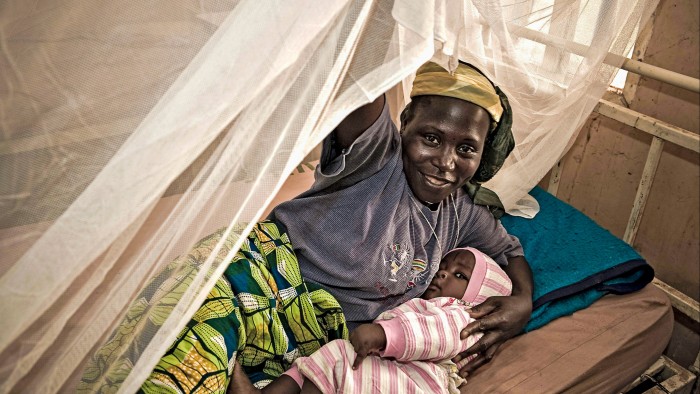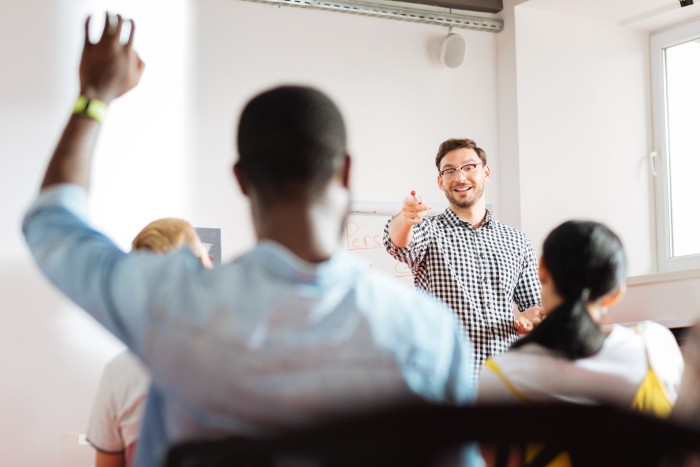Case study: how sharing risks can save lives

Roula Khalaf, Editor of the FT, selects her favourite stories in this weekly newsletter.
Prashant Yadav is a senior fellow at the Center for Global Development and affiliate professor at Insead
Many groundbreaking innovations in life sciences — from novel treatments and diagnostics to digital health tools — remain out of reach of people in low- and middle-income countries. Manufacturers can be unwilling to take on the risks of unpredictable demand, fragmented and uncertain funding, regulatory uncertainties and political instability.
Yet limited ability to pay means companies cannot charge more to offset those risks. Instead, they underinvest, especially in production capacity, limiting access to life-saving innovations. While donors can fill gaps, they do not systematically decrease the risk for global companies to serve these markets better.
One recent response is the use of “volume guarantees”: providing a manufacturer with an assured minimum order volume over a designated period in exchange for a commitment to better pricing and guaranteed supply. This model has expanded access to contraceptive implants and vaccines to protect against rotavirus, diphtheria, pertussis (whooping cough), tetanus, hepatitis B and hib.
In 2016, the UK’s international development agency and CDC (now British International Investment) created MedAccess to do more. It provided $200mn for volume guarantees across a range of products to support risks companies or health agencies were unable to bear. By late 2017, chief executive Michael Anderson had recruited key staff and put the structures in place to launch.
Mosquito nets: accelerating uptake
Sleeping under a mosquito bed net is an affordable and effective intervention against malaria. Nets have been widely used, with significant funding from organisations such as the Global Fund and the US President’s Malaria Initiative.
But the gradual emergence of resistance to the basic pyrethroid insecticide they use posed a significant risk to control efforts. A new generation of nets with innovative insecticide coatings was more expensive, and limited demand meant producers such as BASF, the German chemical company, were reluctant to scale up sufficiently to lower production costs and reduce prices.
MedAccess considered global and national policies, financing and regulation to assess the likelihood of these nets’ approval, recommendation and use. In 2019, MedAccess and the Bill & Melinda Gates Foundation jointly provided BASF with a four-year volume guarantee to purchase a specified volume of innovative nets that combine pyrethroid and chlorfenapyr insecticides. In exchange, the company agreed to reduce prices by two-fifths.

A key question for MedAccess is whether volume guarantees lock in the first supplier or incentivise others to enter the market, driving price competition, efficiency and maintaining a diverse innovation pipeline. There is criticism and continuing scrutiny of how far they risk granting an unfair advantage to the manufacturer who receives the support.
In practice, the project actually shifted market dynamics towards greater self-sustaining competition. By the end of 2022, BASF had shipped more than 35mn nets to 16 countries and the volume guarantee was not called. In March this year, the World Health Organization (WHO) made a strong recommendation for the use of dual insecticide nets, increasing demand further and bringing in new manufacturers with such mosquito nets.
Vaccines: approval uncertainties
After three decades of development by GSK with support from global health funders, European regulators approved the RTS,S malaria vaccine in 2015. But the WHO remained hesitant and recommended only a pilot programme in a few countries. Without a more comprehensive endorsement, Gavi, the multilateral vaccine alliance, and other donors did not pledge funding. That left GSK exposed to risks that could have halted production.
In mitigation, MedAccess provided a guarantee to cover new types of risk: of regulatory approval and associated funding. It offered Gavi a guarantee of $56mn to underwrite its support. This allowed GSK to continue manufacturing while awaiting a final WHO decision. In October 2021, the agency recommended wider use in children across sub-Saharan Africa. Gavi then established a funding mechanism, and deployment has since expanded significantly.
An unusual growth dilemma
With more than 10 different volume guarantees underwritten over five years, MedAccess has increased patient access through partnerships with life science companies and global health funders. With backing from his board and funders, Anderson is exploring different health applications, notably treatments and diagnostics for non-communicable diseases such as diabetes.
But the chief executive sees multiple risks ahead. Expanding too fast to a broader range of products and markets brings the danger of over-reliance on volume guarantees and creating a moral hazard: that all companies seek risk underwriting before undertaking any initiatives in lower income countries. “We’re not interested in expanding market share for us, we’re interested in the market working well,” Anderson says.
His team has developed tools to assess the potential public health and market implications, but it is a challenge to achieve consensus and alignment with their partners on which deals to prioritise. Declining a potential customer’s request is difficult, even for a social enterprise.
Questions raised
MedAccess’s volume guarantee mechanism has demonstrated its value in markets where the funders are primarily global agencies and the current risks are relatively low. Should it support projects for which individual countries are responsible for purchasing?
As MedAccess expands to additional therapeutic areas, it must tackle multiple forms of risk. These include: the risk that a country will fail to meet its payment obligations; that some countries switch more quickly to new interventions; that some regulators withdraw approval or marketing authorisation; that raw material prices increase beyond reasonable limits due to supply chain disruptions.
Which risks should be absolutely avoided? Which can be contracted upon and how can they be mitigated? MedAccess currently values its volume guarantee exposure as a derivative financial instrument at fair value. How should it assess that fair value given different risk profiles of the volume guarantee being called?
For a teaching note to accompany this case study, contact prashant.yadav@insead.edu

Comments